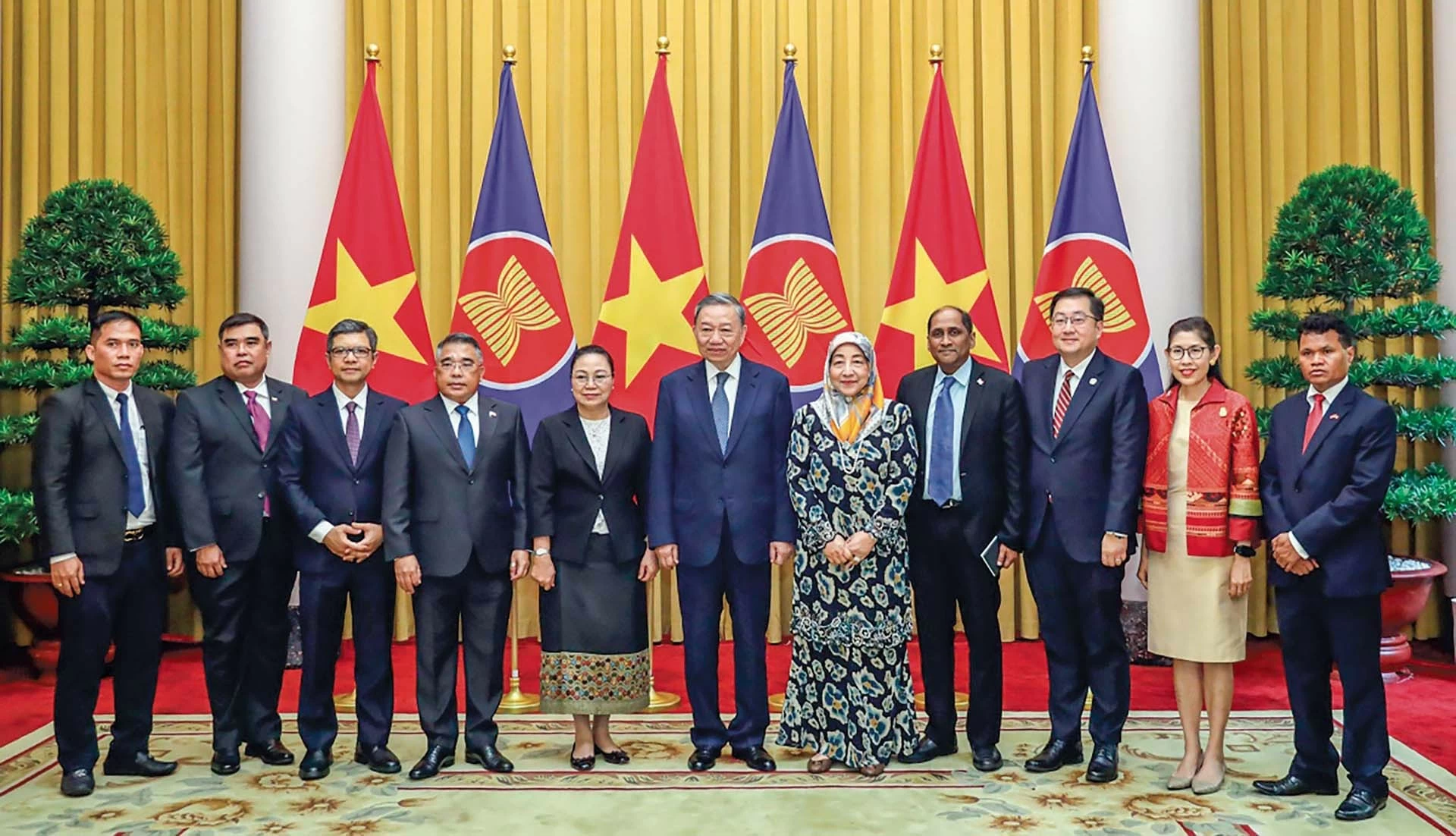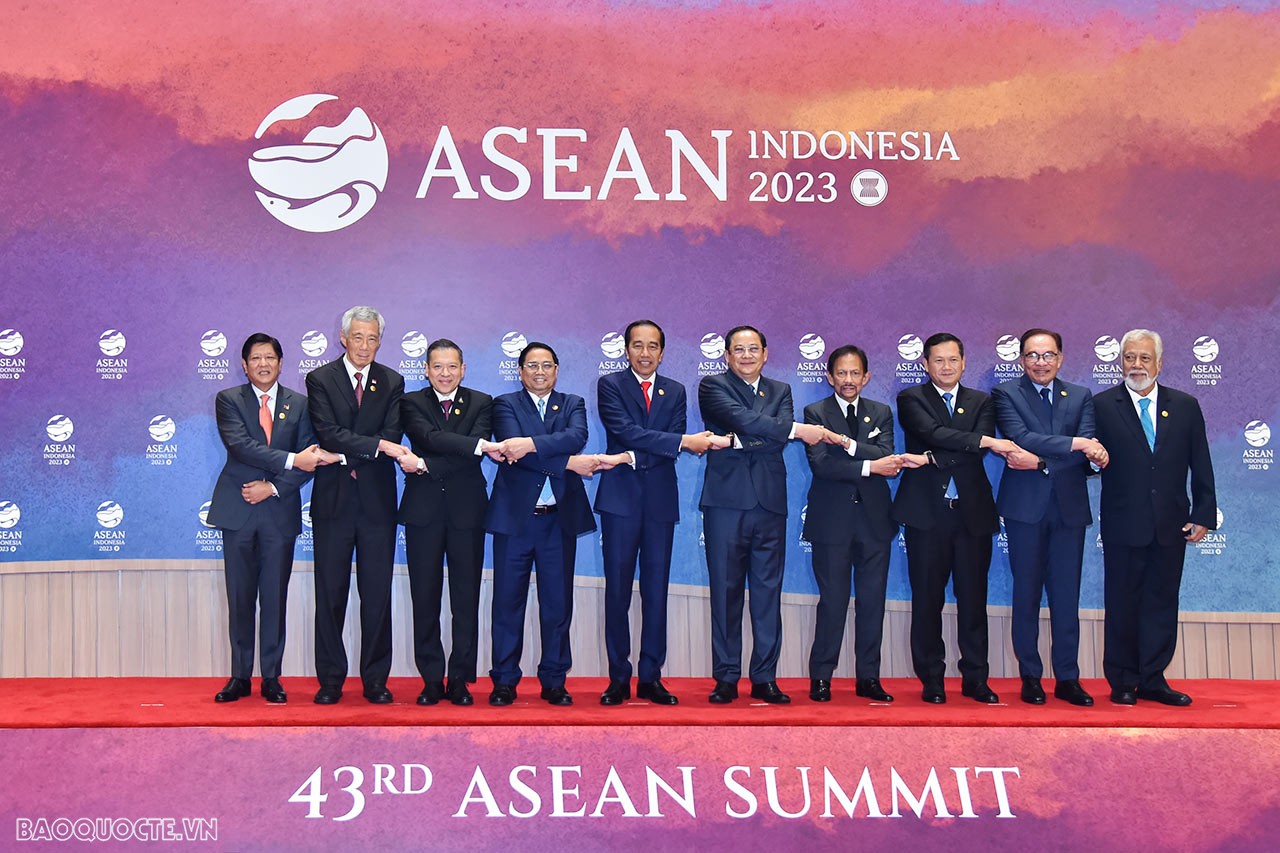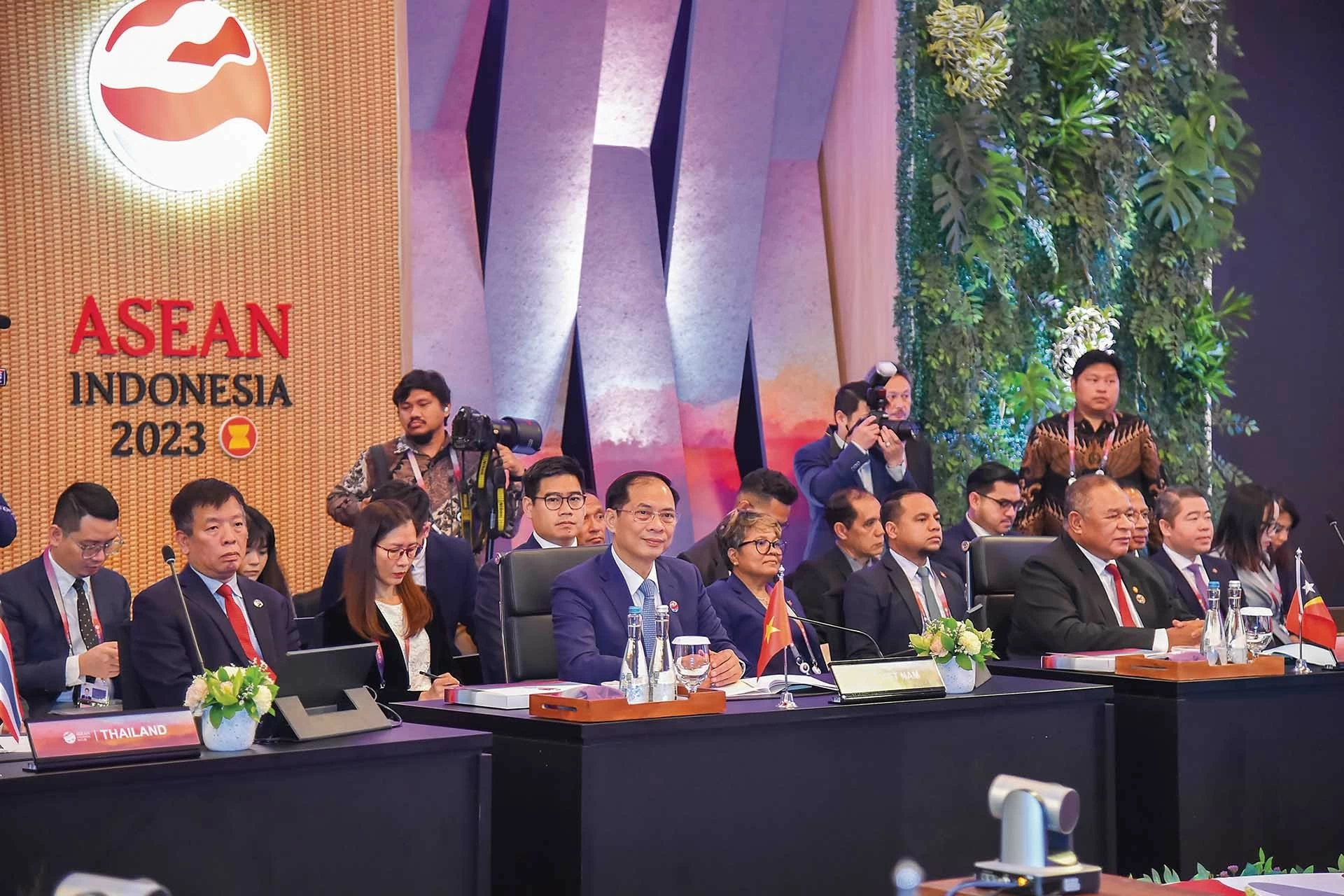
ASEAN’s path to regional integration and resilience
Latest
 |
| President To Lam received Ambassadors and Chargé d'Affaires of ASEAN countries and Timor-Leste in Hanoi who came to greet and congratulate him on the occasion of his election as President of the Socialist Republic of Vietnam, in Hanoi on May 30, 2024. (Source: VOV) |
The formation of ASEAN, along with the region’s profound historical transformations, has elevated Southeast Asia from a landscape of past divisions to a shining beacon of solidarity and cooperation within the Asia-Pacific region, with strategic political and economic stature. Bonded by a shared mission of peace, stability, cooperation, and development, ASEAN has become increasingly cohesive and resilient, continuously striving to achieve new heights in fulfilling this mission.
Bonded in shared mission and vision
“Our mountains, rivers and seas no longer divide us but link us together in friendship, cooperation and commerce.” [1] These aspirations, envisioned nearly 30 years ago, laid the foundation and motivation for ASEAN’s cohesion in all three dimensions of time, space, and strategy.
Building the ASEAN Community is an ongoing process that has evolved over the years. The overarching goal, as outlined in ASEAN’s objectives, is to create a community that is politically cohesive, economically integrated, and socially responsible. Despite the drastically changing landscape, this goal remains unaltered. However, at different junctures with varying priorities, ASEAN will translate this overarching goal into specific directions that align with the evolving trends of each phase.
In 2015, which also marked the founding of the ASEAN Community, the member countries adopted the ASEAN Community Vision 2025 with the theme “ASEAN 2025: Forging Ahead Together,” focusing on strengthening integration across different levels, from the regional to the global stage. Less than a decade later, amid increasingly unpredictable and challenging circumstances, the 2023 ASEAN Summit decided to develop a more long-term and strategic vision for ASEAN. As a result, the ASEAN Community Vision 2045 was established, charting a path for ASEAN centered on being “resilient, dynamic, creative, and people-centered.” These key themes would guide ASEAN’s thinking and actions in the coming decades, ensuring proactive and flexible responses to any changes.
Resilience in a changing world
Growing and becoming stronger through hardships and challenges, ASEAN symbolizes strength, unity, sustained efforts, and resilience. In the face of a rapidly changing global and regional landscape, with emerging trends leading to multifaceted impacts—both negative and positive—ASEAN must redouble its efforts to uphold and expand upon nearly six decades of cooperative achievements.”
 |
| Prime Minister Pham Minh Chinh and leaders of ASEAN countries at the 43rd ASEAN Summit in Indonesia in September 2023. (Photo: Tuan Anh) |
Steadfast in economic Integration
Amid a global economic landscape still marked by many uncertainties, ASEAN remains a beacon of growth. With a GDP of $3.8 trillion in 2023, ASEAN stands as the world’s 5th largest economy and is projected to climb to the 4th largest by 2030 if the current growth trajectory continues. ASEAN is currently an attractive investment destination, with total FDI reaching $229 billion in 2023, surpassing the investment made in other developing economies. [2]
In response to emerging development trends, ASEAN has undertaken significant efforts and commitments to pursue innovatory initiatives. The ASEAN Digital Economy Framework Agreement, the first of its kind globally, aims to provide new growth momentum and enhance the region’s competitiveness. Moreover, ASEAN has emerged as a hub in the restructuring and diversification of supply chains, attracting substantial investment in technology and sustainable development sectors. These include green transition, digital transformation, electric vehicles, renewable energy, smart grids, and sustainable infrastructure.
Strong in Political-Security Cooperation
As the “architect” of regional architecture, ASEAN continues to assert its central role, particularly in promoting norms of conduct, evidenced by agreements such as the Treaty of Amity and Cooperation in Southeast Asia (TAC), the Southeast Asia Nuclear Weapon-Free Zone Treaty (SEANWFZ), and the Declaration on the Conduct of Parties in the South China Sea (DOC). Additionally, ASEAN enhances the effectiveness and appeal of its led mechanisms, including ASEAN+1, ASEAN+3, the East Asia Summit (EAS), and the ASEAN Regional Forum (ARF).
The Joint Communiqué of the 57th ASEAN Foreign Ministers’ Meeting and various previous joint statements, such as the December 30, 2023 Statement on Maintaining and Promoting Stability in in the Maritime Sphere in Southeast Asia, affirm the solidarity, principled stance, and unified voice of ASEAN on regional and international issues. These documents aimed to uphold the rule of law, the peaceful resolution of disputes based on international law and the United Nations Convention on the Law of the Sea (UNCLOS 1982), and the aspiration for partners to support ASEAN’s efforts in making the South China Sea a sea of peace, stability, cooperation, and sustainable development.
Confidence in community identity
Realizing an ASEAN that is people-oriented and people-centered is a common theme running through all of ASEAN’s strategies and initiatives. Recently, several ASEAN initiatives, including the ASEAN Public Health Emergency Coordination System, the ASEAN Centre for Climate Change, and the ASEAN Coordinating Centre for Transboundary Haze Pollution Control, demonstrate ASEAN’s ongoing commitment to addressing issues that directly impact people’s lives
Although much work remains to be done, the achievements of today will undoubtedly spread widely so that people can feel ASEAN’s dedicated efforts at all levels of cooperation. This will foster greater affection, commitment, support, and positive contributions to a stronger community. This, in turn, is the fundamental value in building the identity of the ASEAN Community.
 |
| Foreign Minister Bui Thanh Son attends the 56th ASEAN Foreign Ministers' Meeting (AMM-56) in Indonesia, July 2023. (Photo: Tuan Anh) |
Boundless trust, cherished bonds
In 1995, Vietnam officially embarked on the journey of cooperation and integration with ASEAN. Despite a late start and a low initial base, we have strived relentlessly to catch up and engage fully in all areas of ASEAN cooperation, advancing further to actively and proactively contribute to this process.
The efforts of the past 29 years have yielded proud achievements. From adequately fulfilling our membership responsibilities in the early days to confidently participating in and shaping ASEAN strategies, Vietnam now leads many important ASEAN processes. Vietnam’s position and reputation within ASEAN are the result of concerted efforts by various ministries, local authorities, businesses, and the people. The success of the ASEAN Future Forum 2024, hosted by Vietnam under the theme “Towards a Fast and Sustainable Growth of a People-centered ASEAN Community,” vividly illustrates Vietnam’s contribution to both regional and global affairs.
In the early days of August, as we remember and honor General Secretary Nguyen Phu Trong, a leader who has left many valuable legacies for our country’s foreign affairs, we would like to quote one of his statements about ASEAN: “Vietnam always considers ASEAN as a common home, places high priority on relations with the member countries, and harmonizes Vietnam’s national interests with those of the entire region.” This bond of affection and friendship will continue to accompany Vietnam on its ASEAN journey, with trust and efforts to contribute to a cohesive and resilient ASEAN.
[1] . The ASEAN Vision 2020 adopted at the second ASEAN Informal Summit in Kuala Lumpur in 1997.
[2] . The Annual Report 2023 of the ASEAN Secretary-General.












